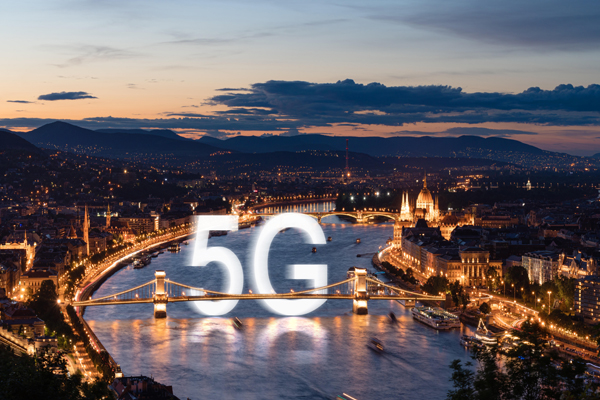Advantages and main problems of 5G network

5G networks are the next generation of wireless technology. 5G networks offer faster speeds, lower latency and higher data capacity than previous generations of networks. 5G networks will be critical to driving the next wave of technological innovation, including autonomous vehicles, IoT devices, and virtual/augmented reality applications.

5G networks allow users to do things like download movies or stream live video in seconds without any lag or buffering, allow surgeons to perform operations remotely, and reverse climate change through smart energy and pollution management systems.
5G networks are also expected to have a significant impact on economic growth. According to a study by Nokia Corporation, 5G networks could add $8 trillion in value to the global economy by 2030.
However, 5G networks are not without their problems. Below are some of the major issues and challenges affecting the development of 5G networks, and how companies can respond to this rapidly evolving market.
What is a 5G network?
5G is the next generation of wireless connectivity that promises to revolutionize the user experience of the connected world. 5G networks are faster and more reliable than previous generations, with download speeds ranging from 1Gbps to 10Gbps.
This enhanced speed and reliability will spawn a new wave of innovations, from virtual reality experiences to robotics to artificial intelligence. 5G will also be more efficient than previous generations, with latency (the time it takes a device to send and receive data) significantly down to a millisecond.
This will enable new applications that were simply not possible before, such as real-time augmented reality and remote surgery. In short, 5G is not just a new generation of wireless connectivity, it is a transformative technology that will change the way people live, work and play.
From a technical point of view, 5G networks are based on a new, more efficient coding scheme called Orthogonal Frequency Division Multiplexing (OFDM). Orthogonal Frequency Division Multiplexing (OFDM) is a form of digital modulation in which data is transmitted using a large number of closely spaced carrier frequencies.
Compared with the original coding scheme, this method has several advantages, including improved spectral efficiency, reduced multipath distortion and improved anti-jamming capability.
5G networks also utilize advanced antenna arrays and beamforming techniques to focus wireless signals directly on users’ devices, rather than broadcasting them indiscriminately in all directions. This will further improve spectral efficiency and reduce interference levels.
By leveraging these next-generation technologies, 5G networks will be able to deliver unprecedented levels of performance and reliability.
The development trend of 5G network
(1) Rapid adoption
According to the Global System for Mobile Communications Association (GSMA), 5G devices will account for 8% of global mobile connections in 2021 and are expected to grow to at least 2 billion by 2025. This rapid adoption is driven by the desire to take advantage of the benefits of 5G, the increased availability of 5G devices, the falling prices of 5G services, and the rollout of 5G networks in more countries and regions around the world.
(2) Bandwidth competition
As 5G technology continues to evolve and deploy, the ensuing competition for bandwidth is the result of major telcos vying for market position. This happened when the Federal Communications Commission (FCC) auctioned radio frequency (RF) frequency bands to 5G enterprise telcos. The auction sparked a radio-frequency gold rush totaling $81 billion.
随着供应商寻找差异化服务和吸引企业客户的方法,这种竞争格局可能会持续下去。
(3)边缘计算提升
边缘计算技术使企业能够计算更接近源的数据,而不是将其发送回云端进行处理。通过这样做,企业可以享受更快的速度和更好的延迟。
此外,边缘计算有助于提高安全性和隐私性,因为数据永远不必离开企业的控制。因此,越来越多的企业正在寻求采用边缘计算来利用其众多优势。
5G将在实现这一目标方面发挥重要作用,因为它具有支持边缘计算所需的带宽和低延迟。因此可以预期,未来几年企业5G市场中边缘计算的采用率将显著增加。
(4)路由器和交换机市场的增长
由于可访问的巨大性能潜力,企业将希望确保其路由器和交换机能够跟上5G网络的发展。许多企业正在采用新的400Gbps路由技术。预计这一趋势将对整体市场增长做出重大贡献。
(5)业务支持
5G网络在企业中越来越受欢迎,因为它比4G快得多,这意味着企业可以利用更高的速度来处理视频流和大文件传输等数据密集型任务。
此外,5G的延迟比4G低得多,这意味着用户启动操作和执行操作之间的延迟更少。这对于需要实时响应的应用程序尤其重要,例如视频会议和在线游戏。
5G网络面临的5大问题
由于目前存在影响5G网络并成为采用障碍的若干问题,可能需要一段时间才能实现5G的全部优势。
(1)生态系统可用性
在全球范围内,城市中心以外的关键基础设施的可用性有限。这种基础设施的缺乏使得在农村地区部署5G网络变得更加困难。此外,5G设备的高成本是部署的另一个障碍。尽管一些电信公司正在投资5G基础设施,但所需投资巨大,因此5G网络的普及还需要一些时间。
与此同时,行业厂商已经提出了几种解决方案来解决这个问题。一种解决方案是使用更高的频谱,这在农村地区应用更中广泛。另一种解决方案是使用比传统蜂窝塔更小的、更易于部署的蜂窝设备。
(2)教育和理解
5G不仅仅是现有4G技术的演进,还是一个全新的网络,需要不同的部署、管理和安全方法。不幸的是,并非所有关键业务决策者都完全了解5G及其带来的业务支持优势。
因此,企业需要在教育资源上进行投资,以充分发挥5G的潜力,帮助他们了解该技术及其影响。只有这样,他们才能做出确保成功推出5G所需的明智决策。
(3)意识的缺乏
5G仍处于起步阶段,一些企业董事会成员对5G是什么以及如何使用5G存在很大的困惑。根据诺基亚公司的调查,五分之一以上的技术买家认为实施5G并不是他们当前业务的优先事项。这种意识的缺乏可能会延迟5G网络的推出,并阻止企业充分发挥这一突破性技术的潜力。
为了克服这一挑战,需要努力让企业高管了解5G的好处以及它可以用来提高效率和推动增长的方式。
(4)成本和复杂性
随着运营商努力满足数据需求和支持新应用,5G网络的部署变得越来越复杂和昂贵。5G网络面临的关键问题之一是需要高密度的基站,这需要对基础设施进行大量投资。
此外,5G网络还面临着支持各种新应用的挑战,例如增强现实和虚拟现实。这些应用程序对网络提出了新的要求,导致拥塞和延迟。因此,运营商面临着提高网络容量并确保能够提供高质量用户体验的压力。
(5)安全
随着5G网络的普及,安全问题日益凸显。由于连接网络的物联网设备数量增加,5G网络比前几代蜂窝网络具有更大的攻击面。
此外,5G网络更加复杂,使得识别和修复安全漏洞更具挑战性。供应链和软件漏洞也是一个问题,因为通常很难知道组件来自哪里以及它们是否被篡改。
尽管存在这些挑战,但企业可以采取一些措施来减轻与5G网络相关的风险。通过与值得信赖的供应商和合作伙伴合作,定期进行安全审计,并实施严格的安全政策,企业可以帮助确保其5G网络安全可靠。
5G网络未来发展面临的问题
5G承诺比其以往的技术提供更快的速度、更低的延迟和更大的容量。这种新一代的网络技术将引发一波技术创新浪潮,其中包括物联网、无人驾驶汽车和虚拟现实的发展。虽然5G的采用仍处于早期阶段,但正在出现一些趋势,这些趋势将塑造该技术的未来。
(1)可访问性
5G的采用将变得更容易获得。目前,5G仅在部分地区可用,而且通常价格非常昂贵。然而,随着基础设施的建设和更多的服务提供商进入市场,预计价格将会下降,使消费者和企业更容易使用5G。
(2)工业4.0
借助5G,新能力最终将催化下一次工业革命。5G通常被称为工业4.0的基础——由数字技术驱动的第四次工业革命。
凭借其高速和低延迟,5G将支持前几代蜂窝网络无法实现的新应用和用例。这将为各行各业开辟新的商机,并为下一波经济增长铺平道路。
(3)虚拟现实和增强现实
5G将继续为混合现实服务提供支持。增强现实和虚拟现实已经在许多行业中得到应用,例如游戏、教育和零售。
借助5G,随着延迟降低和图像质量提高,这些服务将变得更加逼真和身临其境。这一发展将对人们与技术的交互方式产生重大影响,并可能导致混合现实服务在人们的生活和工作中得到广泛采用。
(4)Open RAN
可能塑造5G未来的一个趋势是Open RAN(无线电接入网络)。OpenRAN是指从专有网络设备转向可从多个供应商处采购的基于开放标准的设备。
这将增加市场竞争,并为更多样化的无线电技术提供支持。Open RAN已被全球多家运营商率先采用,并被视为在许多国家部署5G的关键推动力。
5G未来几年的发展
5G代表了人们与周围世界连接方式的重大转变。该技术目前仍处于早期阶段,但它有可能彻底改变人们的生活、工作和娱乐方式。以上提到的趋势将塑造5G网络的未来发展,并有助于确定这种变革性技术在未来几年将如何使用。